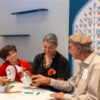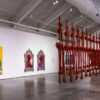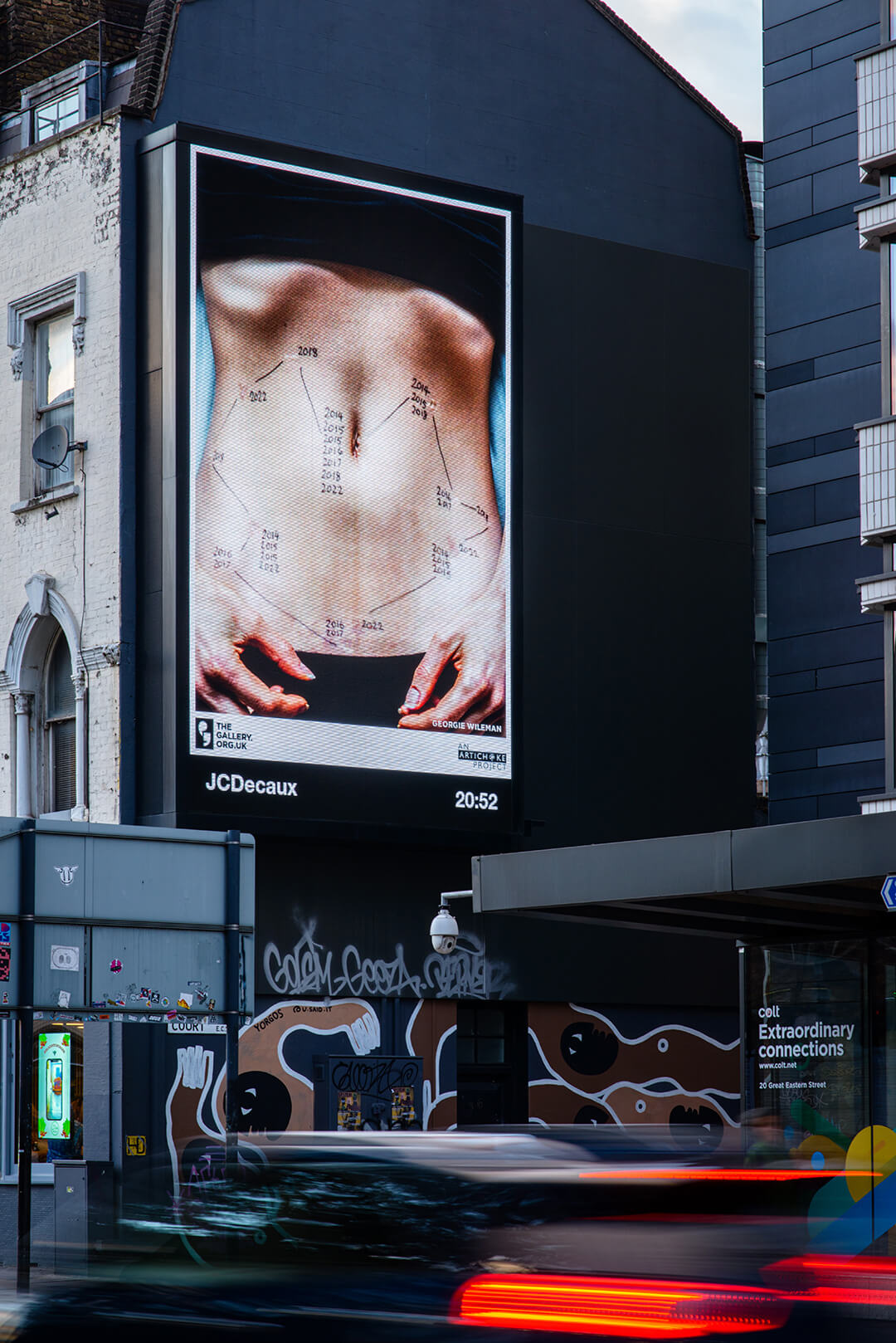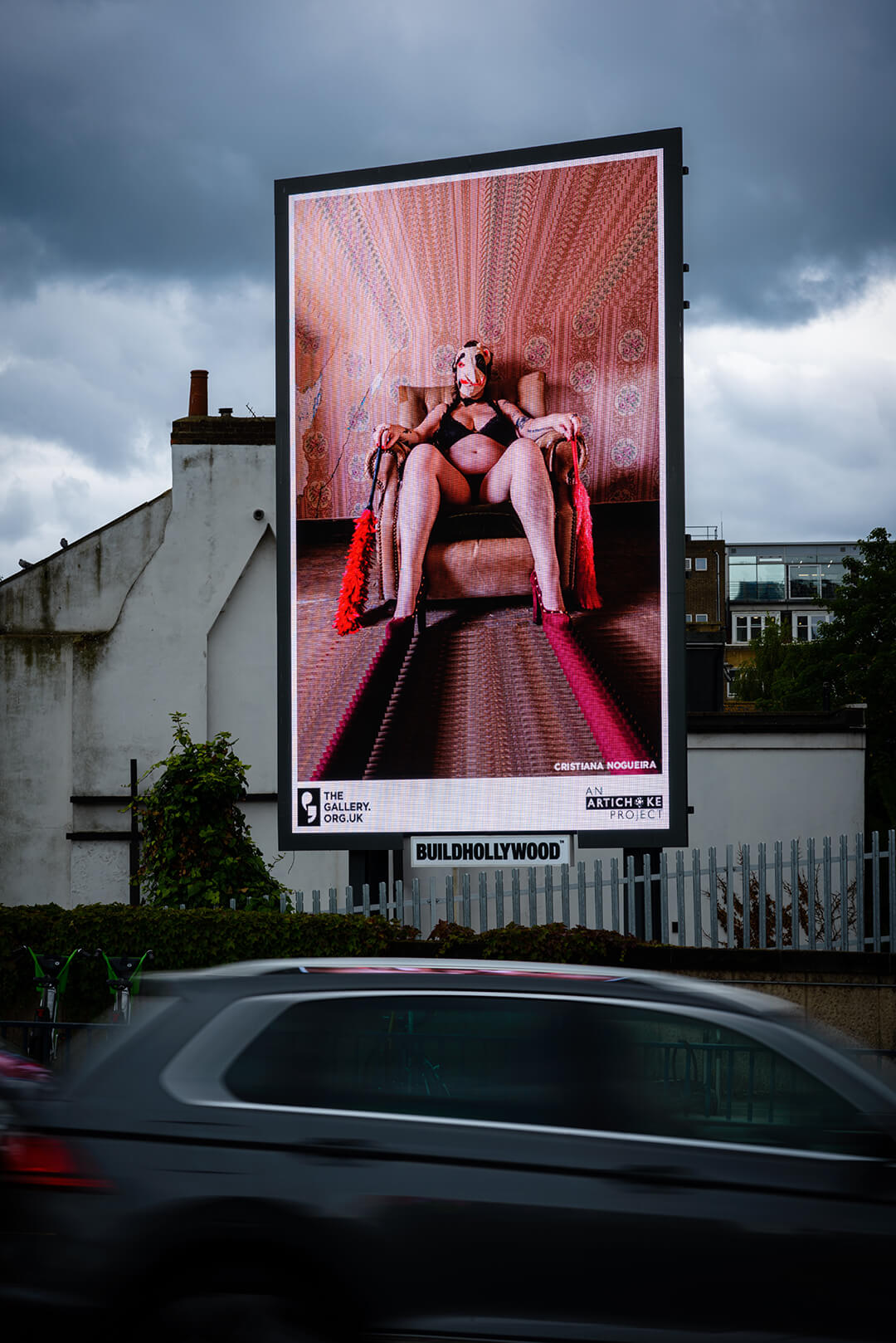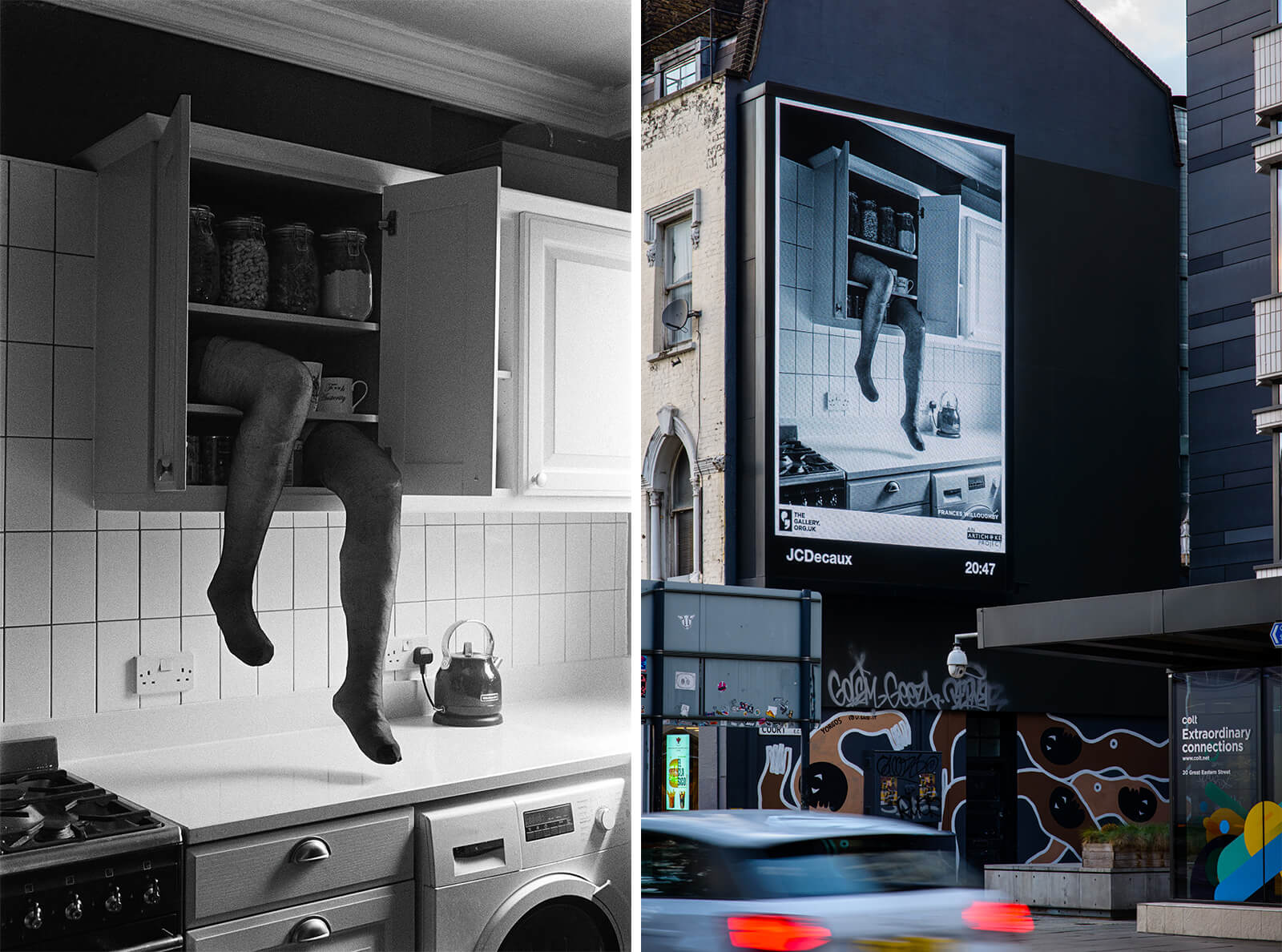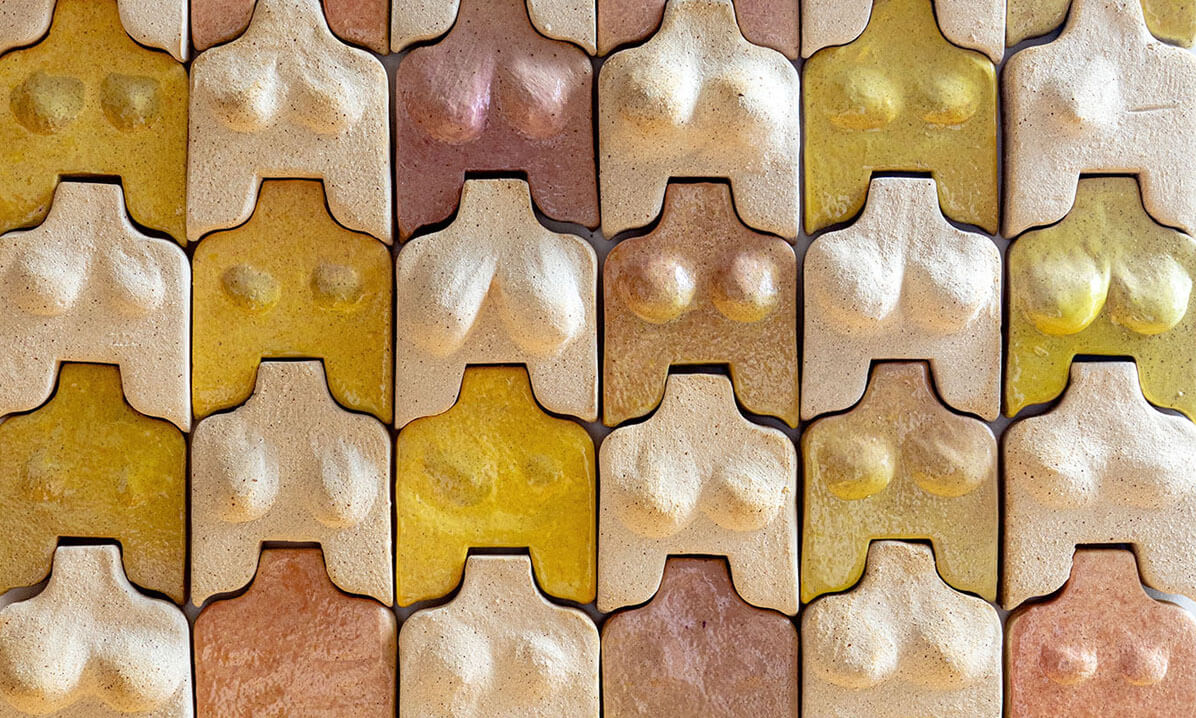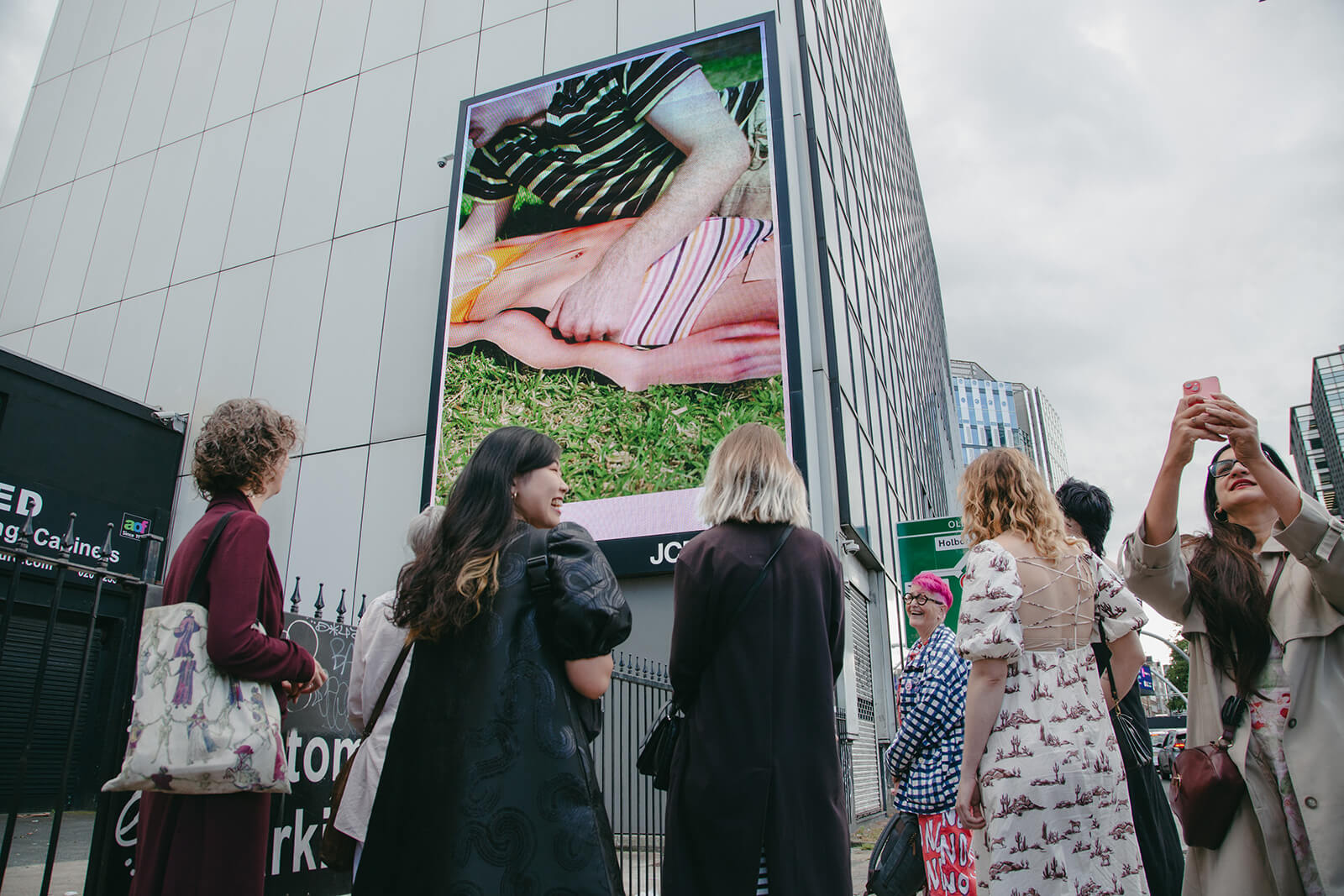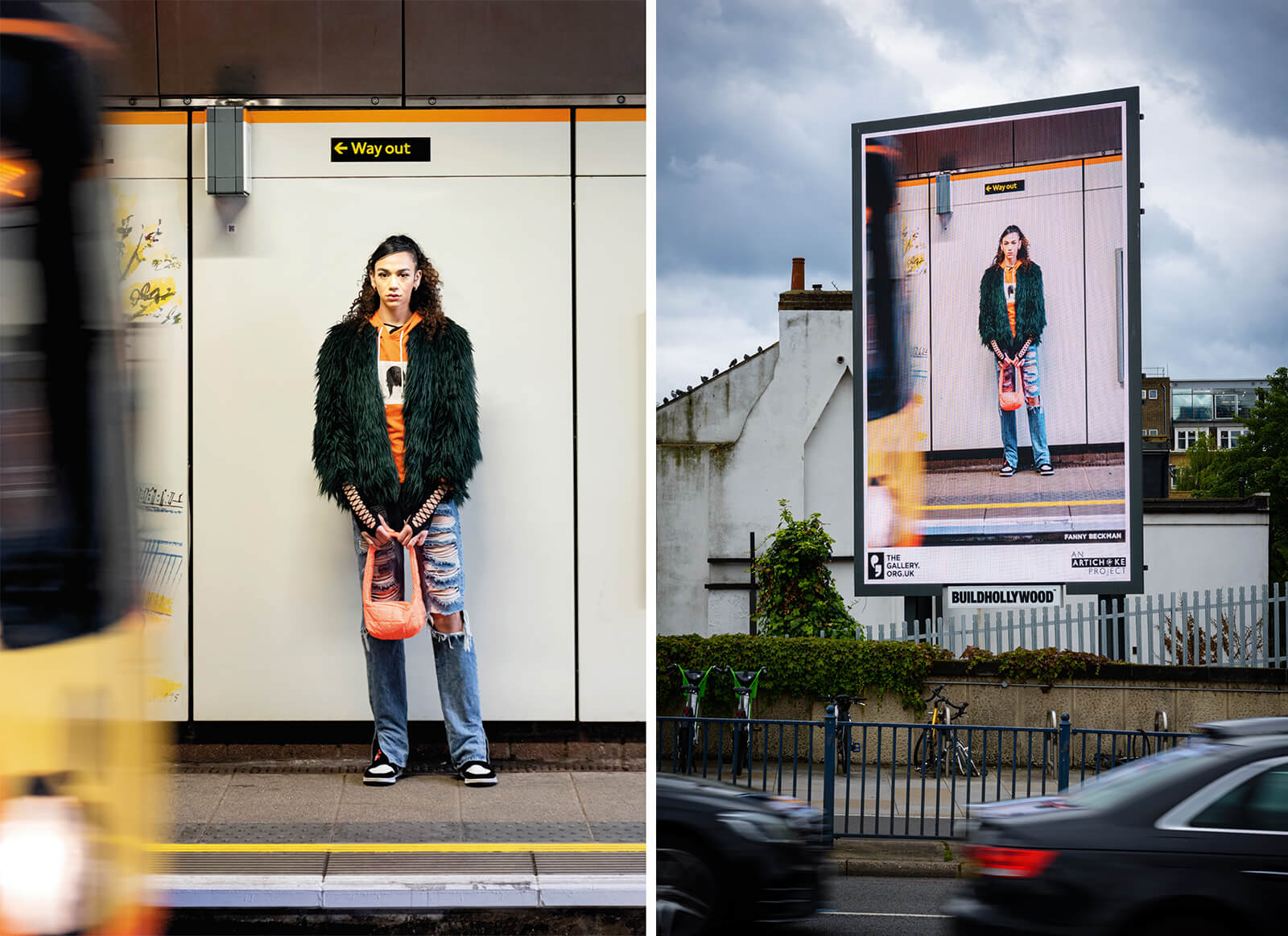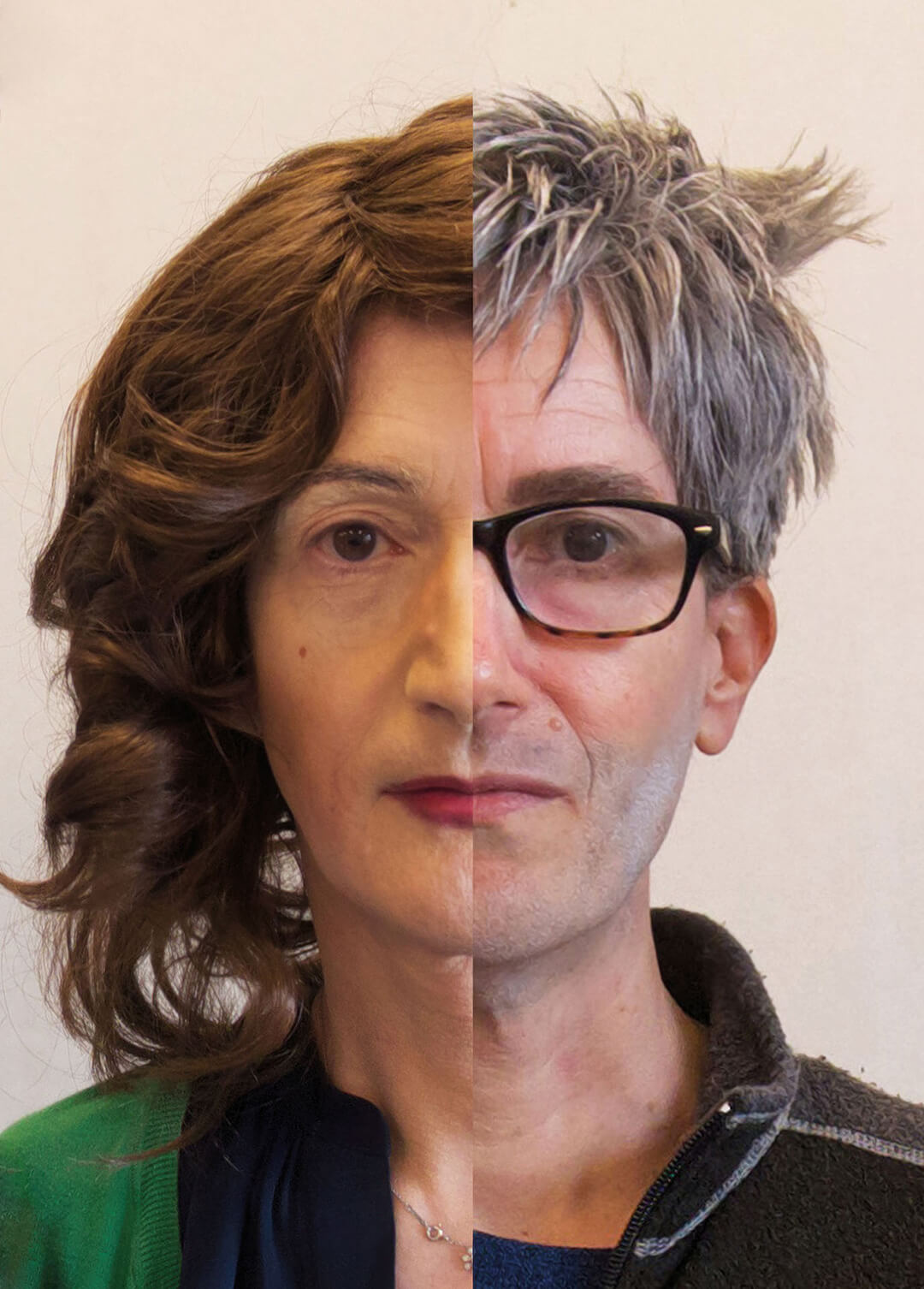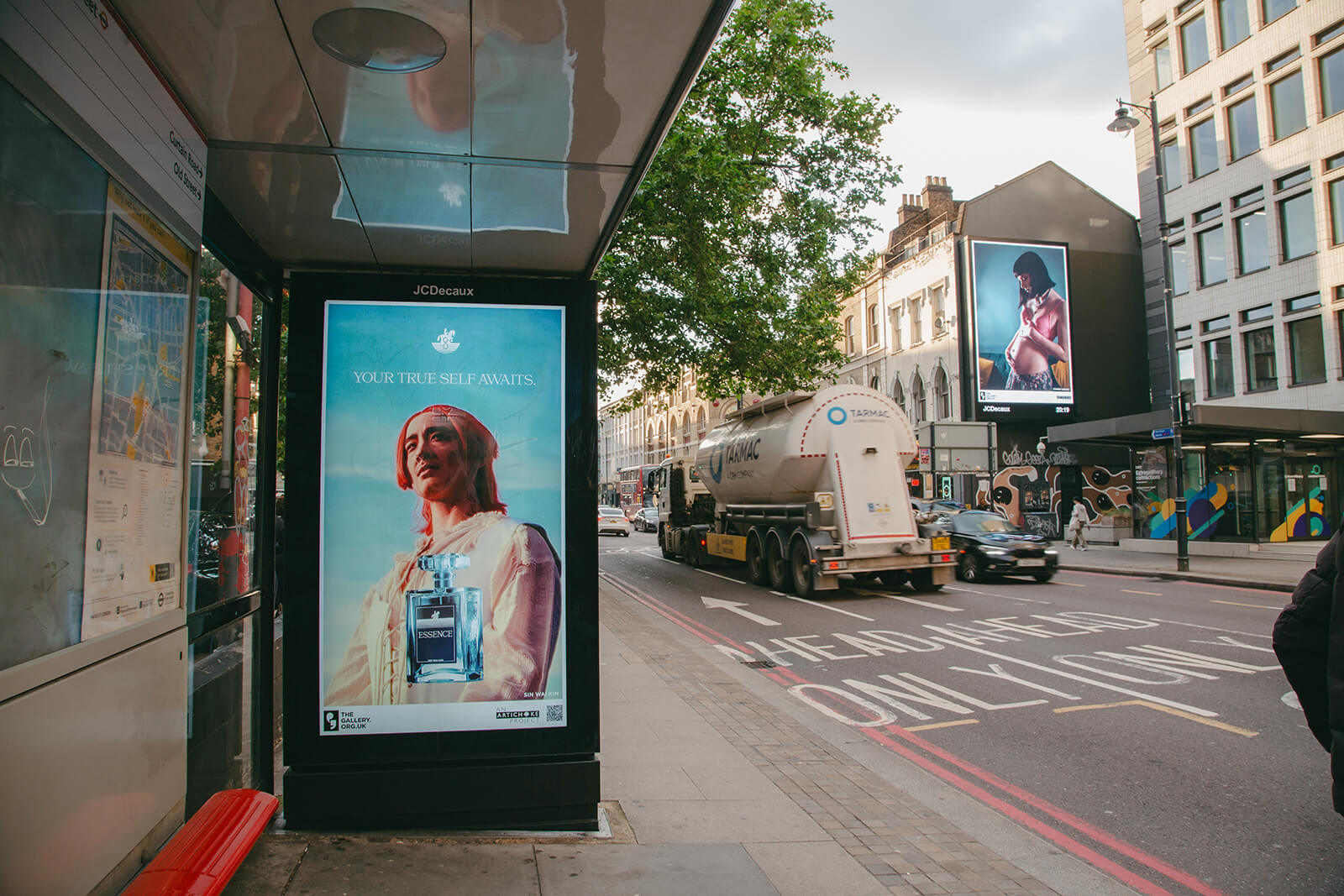Recently, almost 6,000 billboards across the UK have been transformed for the fourth season of The Gallery. Advertised as Europe’s biggest art project, with works displayed in over 30 towns and cities, the public art initiative provides a portal for meaningful public conversations around some of the most important questions and issues of our time. Launched in 2022 by UK arts producer Artichoke with public artist and Creative Director, Martin Firrell, this edition’s showcase includes 11 artworks by selected international artists, curated by Bakul Patki on the theme A Real Woman.
While this could be contrasted to the project’s very first showcase in 2022, Straight White Male, the interrogation of womanhood in a time where anxieties over gender identity and women’s safety play out in access to public spaces is significant. “One is not born a woman, but rather becomes one,” flashes across screens in one of the artworks by Rachael House, a UK-based multimedia artist. One of the most quoted lines from the seminal feminist text, The Second Sex by Simone de Beauvoir, the line serves as a fitting introduction to the exhibited works.
As Patki tells STIR, “A Real Woman was never interesting as a question with a definitive answer but as a statement with multiple potential responses [moving] away from binary points of view.” Exhibiting international artists selected from over 900 entries include Sin Wai Kin, Joanna Hogg & Nick Turvey, Fanny Beckman, Raven Gough, Rachael House, Aljohora Jeje, Eri Maeda, Cristiana Nogueira, Georgie Wileman, Frances Willoughby, and Dawn Woolley.
The Gallery as a project aims to foster new formats for cultural institutions by subverting the gallery models of viewing art, instead bringing it to the street. Viewed by over 200 million people, the novelty of displaying art on billboards also becomes a disruptive tool, highlighting often marginalised issues, such as migration or, in this case, women’s experiences. Patki notes that the sites are selected by the team in collaboration with the project’s partners, making sure to include locations where the locally-based exhibiting artists live.
As Patki tells STIR, “There is something particularly powerful about women taking up space that they have previously been denied – or rather, spaces that they have predominantly occupied ‘passively’, through advertising.” Walking down Old Street, a passer-by may encounter a bare torso on a hoarding. The torso adorned with a constellation of scars and dates indicates the surgeries the artist of the particular work Five Years On, Self, 2014-2022, Georgie Wileman–a British photographer–has undergone for endometriosis.
There is something particularly powerful about women taking up space that they have previously been denied – or rather, spaces that they have predominantly occupied ‘passively’, through advertising.
– Bakul Patki
The confrontation with the intimate yet vital topic of women’s bodies and health in the public realm is also highlighted by Aljohara Jeje’s /pəˈfɔːm(ə)ns/ (Performance) 2018-2020; and Raven Gough, a Cardiff-based artist’s The Fantasy (2022). Gough’s self-portrait depicts the artist with a protruding naked belly–as if pregnant–an intensely intimate image that throws a spotlight on normative gender roles, in particular societal expectations of women in relation to motherhood. The reality, as suggested by the transsexual artist, is more complex. Jeje, a Saudi Arabia-based multidisciplinary artist explores the practice of female genital mutilation in her work. As she describes, the photographs hope to highlight the narratives of those who are silenced by their community by presenting veiled subjects with a pearl in their mouths.
The exposure of the private realities of women is also present in works by women artists Cristiana Nogueira and Frances Willoughby. In her self-portrait, The Queen of the House, Nogueira challenges overly sexualised representations of women in the media and how they may lead to increased domestic violence and femicide. Originally created as a life-size installation, the image depicts her in an armchair with a mask and provocative clothing such as red lingerie and high heels. By playing into and deviating from stereotypes through the presentation of a ‘non-standard’ body, with hairy legs and a cow mask, the image seems to ask what the root cause of violence against women is.
In a similar vein, Willoughby’s Woman House (2022) —inspired by feminist artist Judy Chicago—showcases a pair of stockinged legs hanging from a kitchen cupboard, as if a woman is trapped and perhaps kicking her way out. The work, claustrophobic in its depiction, seeks to reflect the societal expectations of women around the domestic sphere.
Commenting on the objectification of women routinely seen in media, Eri Maeda’s Diversitile (2023) depicts a photograph of a ceramic artwork formed from a grid of tiles each shaped in the form of the bust of a differently shaped woman. It sheds light not only on harmful beauty ideals by challenging viewers’ perception of the ideal female form but also on the symbolic role breasts play in the signification of womanhood. Similarly, Dawn Wooley’s The Substitute (2017) draws attention to gendered experiences of visibility. Portraying an image of a cardboard cutout of Wooley being caressed and held by different men, the work highlights how society often perceives women, literally making the woman subject two-dimensional. Moreover, the visible face of the male figure versus the cut-off head of Wooley highlights a gender imbalance in terms of gaze.
It is this domineering male gaze that seems to threaten women’s presence in public spaces. The looming danger (never quite absent) is perhaps most evident when one considers the number of rape reports in the UK in the last year (69000). These issues, perhaps made most prominent in 2021 when Sarah Everard was kidnapped, sexually abused and murdered by a police officer, led to massive public outrage and debate. Participating artist Fanny Beckman mentions that this incident served as inspiration for her photographic series, Take Back the Streets. On display is Trojan (2022). In the photograph, a young trans woman, Trojan, stands at a train station where she experiences physical and verbal abuse. The idea of taking the photo is to affirm Trojan’s preferred identity by occupying the site of violence.
Going back to the idea that one becomes a woman,Joanna Hogg & Nick Turvey’s Push Me Pull You (2024) portrays the dynamism of gender expression with a photograph that is a composite image of a film that was created by them for Doug Aitken’s Station to Station at the Barbican Arts Centre. In the film, the pair switched roles, performing as each other, complicating binary definitions of gender expression.
Canadian artist, Sin Wai Kin’s Essence (2024) emulates an advert for an imagined men’s cologne of the same name featuring one of the artist’s characters, Wai King as the brand ambassador. As the artist elaborates, the work is about questioning what is ‘real’ and what we agree that it is, bringing into question perceived norms and expectations.
The showcase offers no definitive statement, instead giving viewers a range of questions to contend with: What does it really mean to be a woman? What perspectives can queer voices provide? How do women see themselves? How does the world see women? Who has the right to look? As Patki comments, “I don’t think there’s one specific thing the viewer should take away, but I do hope the perspectives and stories in this exhibition create curiosity and connections and that we can inspire understanding and empathy towards others and their experiences.”

